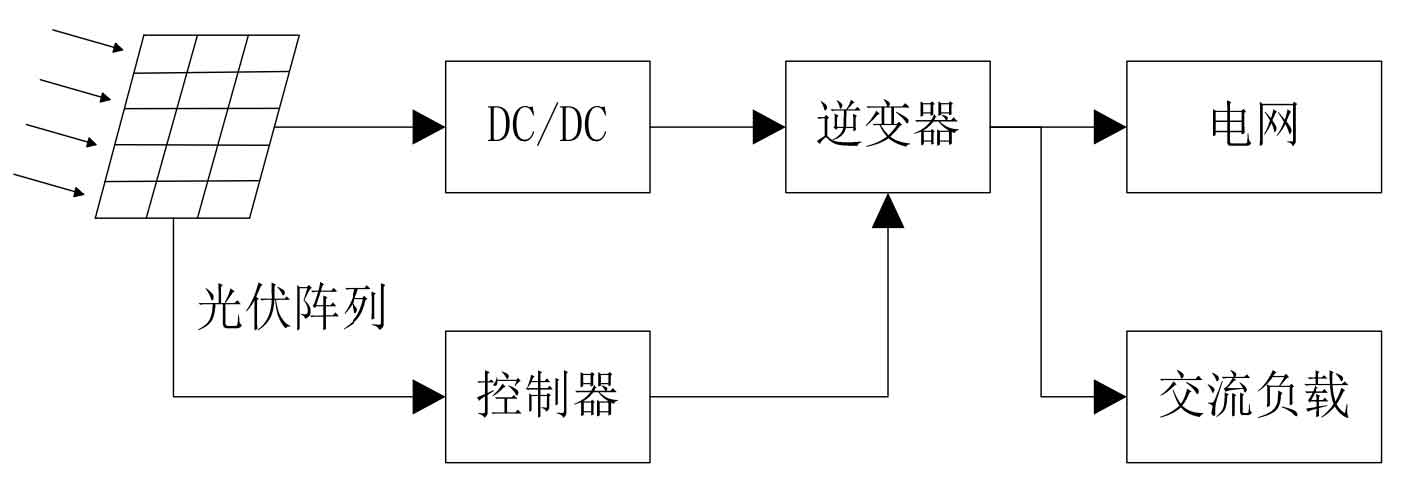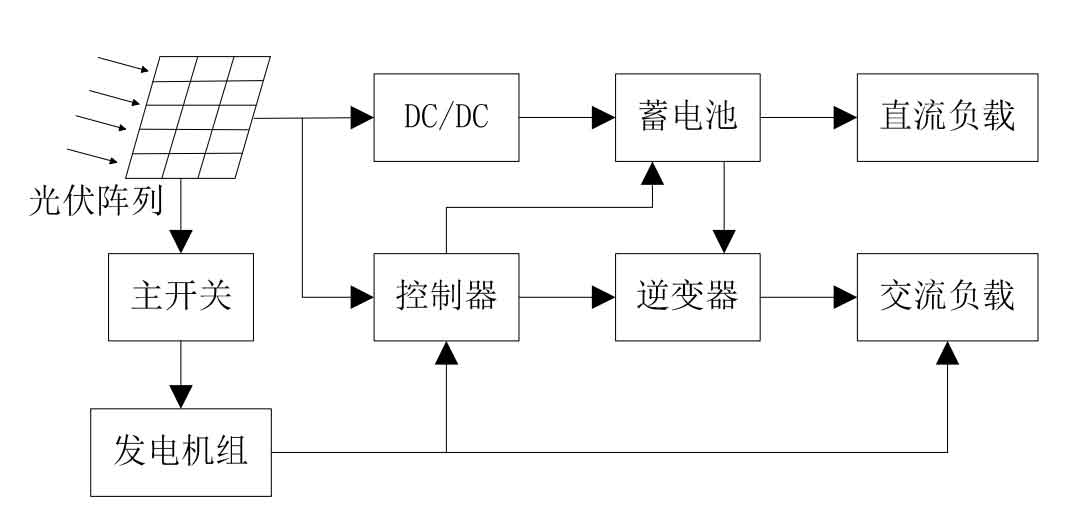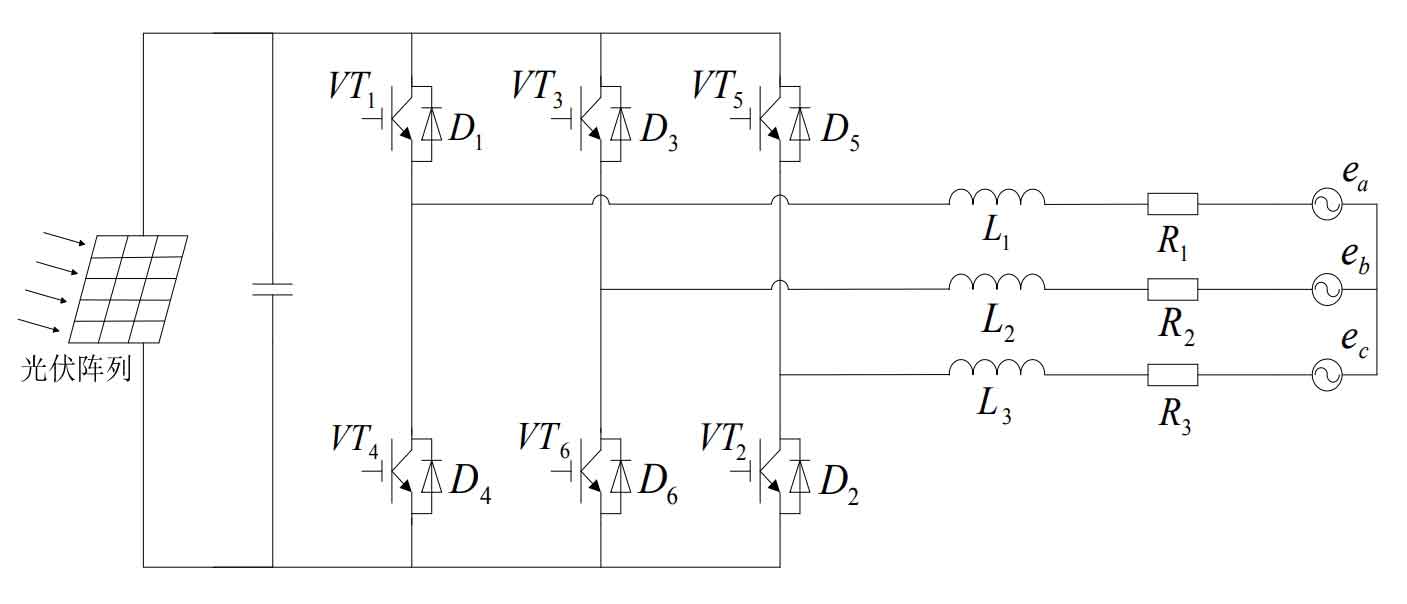Photovoltaic power generation has many advantages, its safety performance is relatively reliable, it is easy to operate in the work, there is no noise, and it will not cause pollution to the environment.This energy source is different from other energy sources, the energy is easy to obtain, and it is not limited by geographical location, does not consume fuel.Because it has no rotating parts, it is very convenient to maintain, the probability of failure is relatively low, it can be unmanned, the construction period is short, the scale is unlimited, it is convenient to install on buildings, and it does not require the erection of transmission lines.These advantages are not available and cannot be achieved by other power generation methods.Due to the scarcity of energy, renewable energy generation is very important for future development, but as an emerging industry, reliability and stability are the primary issues to be solved for new energy generation systems.We need high-quality and reliable transmission of electric energy generated by new energy to the power grid.Solar grid-connected inverters play a role in power conversion in the entire system, so in the process of developing renewable energy to feed back to the grid, we should focus on studying this power electronic device.
Solar inverters are emerging power electronics devices in power electronics technology, which function to convert DC power into AC power. Their core power components are IGBT modules.However, the third harmonic generated by this type of solar inverter can produce high neutral currents, causing serious harmonic pollution to the public grid and resulting in a significant decline in power quality.
In grid-connected power generation systems, the grid-connected current needs to be in the same frequency and phase as the grid voltage. The detection of the phase and frequency of the grid voltage is crucial. The synchronous phase-locked technology of the grid voltage can improve the accuracy, stability, and anti-interference ability of the system’s grid voltage detection.
1. Advantages and disadvantages of solar power generation
1.1 Advantages of solar power generation:
(1) Universal: Solar energy is currently one of the more important new energy sources developed by humans. The existence of solar energy is relatively universal.The range of sunlight is large, and there is light everywhere in cities, villages, plateaus, and basins. It will not disappear due to changes in location and is not subject to geographical restrictions.The development and utilization of solar energy is relatively convenient and direct, without requiring complex conversion processes.
(2) Harmless: In the face of increasingly serious environmental pollution such as haze and climate change, the biggest advantage of solar energy in the development of new energy is its cleanliness.It exists directly and does not need to be extracted or converted by other artificial means, so it will not pollute the environment during the development process, which is very valuable.
(3) Durability: If calculated based on the life span of the Earth, which is several billion years, the hydrogen reserves on the Sun can sustain the life span of the Earth for several times or even up to ten billion years. For humans, solar energy is inexhaustible.
(4) Rich: We know that the reserves of coal have been depleted due to over-exploitation by people. It is because the gradual disappearance of these non-renewable energy sources that forces us to develop new energy sources.Rich energy sources are extremely important for us. Compared with other energy sources, solar energy has obvious advantages in energy reserves, and it can be said to be the most abundant energy source that can be developed at present.
1.2. Disadvantages of solar power generation:
(1) Unstable and uncentralized: Although the solar radiation energy reaching the Earth’s surface is enormous every year, solar energy is dispersed and not concentrated in one place, resulting in a large amount of energy loss.Moreover, the irradiation of sunlight is also affected by changes in natural conditions, such as cloudy and rainy days, nighttime, altitude, and latitude, resulting in intermittent and unstable solar irradiance reaching the ground.
(2) The cost-effectiveness is not high: In the future development and utilization of solar energy, economy is the main factor restricting the development of solar energy. In order to better utilize solar energy, this problem needs to be solved as soon as possible. However, the manufacturing cost of solar energy utilization devices is relatively high, but the efficiency is far from expected.The advantages of solar energy are obvious.If the cost-effectiveness of solar energy can be improved, this can greatly expand the application scope of solar energy.
2. Current situation and development trend of solar photovoltaic power generation at home and abroad
2.1. Current situation and development trend of solar photovoltaic power generation abroad
The solar photovoltaic power generation industry is one of the fastest-growing high-tech industries in the world since the 1980s.As of 2004, the total installed capacity of solar photovoltaic power generation in the world was 964.9MW. By the end of 2005, it was estimated to have reached 4961.69MW. For example, single crystal silicon, polycrystalline silicon, amorphous silicon, concentrator, ribbon silicon, and thin film batteries have become commercialized and practical solar photovoltaic cells.The current international price of solar photovoltaic cells is about $3.15/W, and the price of grid-connected systems is $6/W, while the power generation cost is $0.25/(kW·h). According to research, the conversion efficiency of photovoltaic cells has also been greatly improved, and the specially made gallium arsenide photovoltaic cells in the laboratory can reach about 36%.In addition, with the maturity of technology, the life of the battery can be used for more than 30 years.
The photovoltaic power generation capacity of Japan, the United States and the European Union accounts for about 80% of the world’s photovoltaic power generation capacity, and is the center of the world’s photovoltaic power generation industry.According to some data, the total amount of solar photovoltaic power generation is steadily increasing, and it is predicted that it is likely to reach 64% of the total power generation by 2100. In the future, for a long time, the development direction of photovoltaic power generation will be high efficiency, low cost, long life, strong practicality, etc.
2.2. Current situation and development trend of solar photovoltaic power generation in China
The end of the 21st century was a period of rapid development of photovoltaic power generation in China.During this period, China’s photovoltaic module production capacity increased year by year, while costs continued to decrease, the market continued to expand, and installed capacity also increased year by year, reaching a cumulative installed capacity of 35MW in 2004, accounting for about 3% of the world’s share.Over the past 10 years, China’s photovoltaic industry has maintained a long-term average global market share of about 1%.
It is expected that by 2020, China’s photovoltaic technology industry will gradually improve and develop. With our continuous exploration and research on photovoltaic technology, the cost will continue to decline, and the photovoltaic market may undergo the following drastic changes: From 2005 to 2010, China’s solar cells were mainly used in independent photovoltaic power generation systems, and the power generation cost was about 1.2 / (kW·H) in 2010.From 2010 to 2020, the transition from independent photovoltaic power generation systems to grid-connected power generation systems will be carried out, and the power generation cost will be about 0.60 yuan / (kW·h) in 2020. Moreover, the technical level of China’s photovoltaic industry may catch up with the world’s advanced level.
2.3. Research on the problems on the future development path of solar power industry
The development and use of solar energy is forced by the depletion of other energy sources, so it started late and has more room for research. However, we can clearly see that solar power generation plays a very important role in energy applications.In order to ensure the stable development of the solar power generation industry, the following points need to be taken into account:
1). Continue to develop new solar cell materials and find suitable methods to improve the photoelectric conversion efficiency of the cell;
2). Through research on the MPPT algorithm for solar photovoltaic cells to achieve maximum power tracking of sunlight;
3). Optimize the combination algorithm of solar photovoltaic cell arrays to optimize the solar photovoltaic cell arrays;
4). Through the research on soft grid-connected technology for solar photovoltaic power generation, the impact on the power grid can be reduced;
5). Explore and implement the combination of solar power generation and construction to achieve green building and self-powered power generation;
6). Explore and develop protective policies, laws and regulations for introducing solar photovoltaic power generation, protect the price of solar power generation, and promote the solar power generation industry to obtain greater development space.
3. Classification of solar photovoltaic power generation systems
Solar photovoltaic power generation system is actually a huge system, which also includes different categories. By analyzing this system in detail, it can adopt different design methods for different regions and different needs.Solar photovoltaic power generation system can be classified according to different needs of different occasions, and can be divided into: stand-alone photovoltaic power generation system, grid-connected photovoltaic power generation system, and hybrid photovoltaic power generation system.
3.1 Stand-alone photovoltaic power generation system
As the name suggests, an independent photovoltaic power generation system refers to a photovoltaic power generation system that is not connected to the grid and provides power independently for users.Independent grid photovoltaic power generation systems are mainly used in remote mountainous areas or places where insufficient sunlight exposure leads to the inability of the grid to meet the interconnection needs of the region.Therefore, this system is mainly used to meet the daily work of individual users. It must have storage capabilities to meet the power demand during nighttime or rainy days when there is insufficient sunlight.This complex power supply method, due to environmental impact and improper use of batteries, will shorten their service life, and when there is excess energy, the power will be wasted, causing unnecessary trouble to the user’s work and life.

Figure 1 is a typical independent photovoltaic power generation system structure diagram.The independent photovoltaic power generation system consists of photovoltaic cells, DC/DC converters, batteries, and controllers. In this power generation system, if only DC loads need to be powered, then only the batteries are required. However, when the power supply object becomes an AC load, a solar inverter that can convert DC voltage to AC voltage is needed.
3.2 Grid-connected photovoltaic power generation system
Photovoltaic grid-connected power generation is the main research and development direction of photovoltaic power generation.It can connect the photovoltaic power generation system with the power grid. When there is excess power, it can timely transmit the excess power to the power grid. Not only that, when the power generation system of photovoltaic power generation is insufficient, it can obtain power compensation from the power grid to achieve balance, and can meet the power needs of work and life.In addition, this system does not require energy storage links, eliminating the need to design energy storage equipment control devices, which can greatly save equipment costs and maintenance rates.

The grid-connected photovoltaic power generation system is shown in Figure 2.The grid-connected photovoltaic power generation system consists of photovoltaic cells, DC/DC converters, solar inverters, controllers, etc. The photovoltaic power generation system is directly connected to the power grid, converting the direct current generated by the photovoltaic cells into alternating current with the same frequency and phase as the grid voltage.When there is sunlight, the photovoltaic system uses solar power to generate AC power, which is used to supply the load. Sometimes the load requires less power, and the generated power exceeds the load demand. In this case, the excess energy will be sent to the grid.At night or on cloudy or rainy days without light, the solar power generated is far from meeting the load demand. In this case, the grid can automatically supplement the power to the load.Once the main grid is powered off, the photovoltaic system will automatically stop supplying power.In the whole process, the solar inverter, which can be connected to the grid, plays an important role.
3.3 Hybrid Photovoltaic Power Generation System

Figure 3 shows a hybrid photovoltaic power generation system, which is different from the two systems above. The difference between it and the two systems is that it adds a set of backup generators for occasional needs.When the photovoltaic cells generate electricity, sometimes the battery reserves may not be sufficient, or the battery may not generate enough power. In these cases, the backup generator set is needed. By starting the backup generator set, it can directly supply power to the load, and can also rectify and charge.This is the so-called hybrid photovoltaic power generation system.
4. Topological structure of solar power system inverter
Inverter plays a pivotal role in the entire solar power generation system, and in-depth and systematic research on solar inverters is needed.Solar inverters have different structures. If solar inverters are classified according to power levels, they can be divided into single-stage structures and multi-stage structures (generally two-stage structures).The following will introduce and analyze the topology structure of solar inverters.
4.1 Single-stage solar grid-connected inverter
The grid-connected type of single-stage solar grid-connected inverter is a low-voltage grid connected to the grid for power supply.However, when the output voltage of the photovoltaic cell is low, the single-stage solar grid-connected inverter is connected to a high-voltage grid, which requires a boost transformer with isolation and filtering functions before being connected to the grid.The inverter grid-connected control and maximum power point tracking control of the single-stage solar grid-connected inverter should be performed in the same inverter link, which means that the solar inverter implements all control procedures in the inverter link.The structure of the single-phase single-stage inverter is shown in Figure 4.

The inductance equivalent internal resistance, three-phase bridge inverter circuit, stabilizing filter capacitor, commercial power grid, grid-connected filter inductance, and solar array together form a single-stage inverter system.The single-stage inverter system only has one solar inverter link, which makes the inverter system structure relatively simple and increases work efficiency without complex structure.However, because there is only one link, this link carries all the control algorithms, and the control system contains too many and complex algorithms, which causes inconvenience.In addition, the output of the photovoltaic cell is directly used as the input of the solar inverter, which results in a double-frequency ripple voltage of the output voltage of the photovoltaic cell. Therefore, a filter capacitor is needed on the output side of the photovoltaic cell to suppress the voltage ripple.The response speed of the MPPT photovoltaic system will decrease with the increase of the filter capacitor.
4.2 Two-stage solar grid-connected inverter
The topology structure of the two-stage solar inverter system includes a filter, a three-phase bridge inverter circuit, a boost circuit, a photovoltaic array, and a utility grid.Due to the shortcomings of the single-stage solar grid-connected inverter mentioned above, the design in this article chooses the topology structure of the two-stage solar grid-connected inverter.This solar inverter can make the control system less complex and can control the inverter grid connection and the MPPT of the photovoltaic cell separately.As shown in Figure 5.

The boost function not only ensures the maximum power output of the photovoltaic cell, but also enables the bus of the subsequent stage to meet the amplitude requirements of the grid-connected voltage. The boost function is mainly achieved through the front-stage Boost circuit, which also controls the MPPT.In order to ensure that the grid-connected current reaches the same frequency and phase as the grid-connected voltage, and obtains a power factor of 1, it relies on the three-phase bridge inverter circuit of the subsequent stage.The circuit of the subsequent stage should control the grid-connected current and ensure the stability of the DC bus voltage.The circuits of the two-stage inverter topology of solar energy are mature in technology, and the structure of this circuit is simple and easy to operate, but it cannot achieve electrical isolation.If the project requires, we can solve it by adding a transformer, which must be placed at the grid-connected output voltage of the subsequent stage.If this transformer is added, it will increase the weight and volume of the solar inverter, and correspondingly increase the cost of the photovoltaic system.
5. Conclusion
The key technologies for the development of photovoltaic cells and their three-phase solar grid-connected inverters are theoretically analyzed and modeled through simulation. The main research contents of this paper are as follows:
1). Based on the physical equivalent model of photovoltaic cells, a mathematical model of photovoltaic cells was established. Using Simulink modules, a simulation model of photovoltaic cells was established, and then the simulated waveforms collected were used to observe the output characteristics of photovoltaic cells.
2). Introduce the methods and principles of maximum power point tracking, and introduce several common MPPT methods, focusing on the simulation of the disturbance observation method using Matlab/Simulink.
3). A simulation model for MPPT of photovoltaic power generation system based on Boost circuit is established. On this basis, the algorithm is simulated using Matlab/Simulink in combination with the disturbance observation method.
4). By designing a three-phase solar grid-connected inverter, the size of the grid-connected current and power can be controlled to obtain a grid-connected current with the same frequency and phase as the grid voltage, thereby meeting the grid connection requirements.
